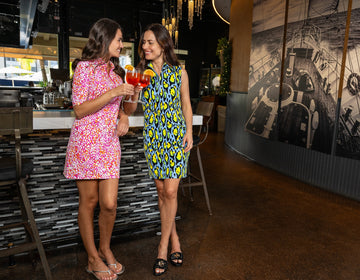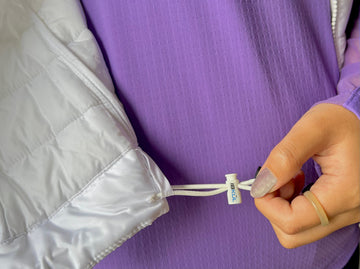As we collectively celebrate the onset of summer, there is one skincare staple that we all swear by sunscreen. There are countless sunscreens on the market, and it can be overwhelming to know which products work best and why. With an influx of sustainable and eco-friendly options, consumers are increasingly speculating about the environmental and ecological footprint of their sunscreen habits.
When it comes to sunscreen, Oxybenzone has become quite the buzzword as of late. Not sure what all the hoopla is about? It’s time you have a crash course on Oxybenzone (also known as BP-3) and its concerning impact on marine life, and what IBKÜL is doing to initiate change.
How Does Sunscreen Impact the Environment?
Glad you asked. There is increasing concern growing over the debris of microbeads and Oxybenzone in oceans and smaller bodies of water. Marine habitats have shown significant physical and ecological mutations due to an estimated 14 million tons of debris reported to wash in our oceans from coastal areas, according to a 2015 survey published in the online journal, Science Online Publication. This research shows sea life is greatly affected by plastic pollution, wastewater, boaters, and swimmers, thus affecting our food sources as well. The Archives of Environmental Contamination and Toxicology published a study showing signs of baby coral undergoing bleaching and extreme mutations in response to the toxic waste of BP-3.
These mutations are a clear sign that typical household items containing Oxybenzone, BP-3, and BP-2 (a common additive in beauty-care products since the 1960s) are rapidly changing marine life, permanently disrupting aquatic biomes. Unfortunately, you don’t have to be a seafood lover to come into contact with microplastics and toxins in your food. It’s a problem affecting all food sources (and in some cases air supply quality). CNN released a study examining 15 different sea salt brands that reported up to 273 microplastic particles per pound (600 particles per kilograms) of salt. You are what you eat, after all.
Is it really that big of a deal?
Yes. With accounts of ocean acidity levels rising and the apparent effects on a variety of marine species and habitats, it’s no longer a matter of speculation. Although a wide variety of organisms can adapt to rising CO2 levels, current production and industry standards are steamrolling a chemical experiment the ocean has never previously encountered in over 25 million years. Its global impact is one that can no longer be ignored. Between 4 and 12 million metric tons of plastic enter the ocean each year.
Sea life is experiencing an increased and worrisome amount of extinctions, with many organisms developing weakened skeletal structures. The Haereticus Environmental Laboratory conducted a study showing that even absurdly low concentrations of Oxybenzone are alarmingly changing the coral reefs in tourist destinations like Australia and Hawaii, where it reported over 6,000 tons of chemicals derived from sunscreen are carried into the ocean by local swimmers.
But Isn’t One Sunburn One Too Many?
Of course! National Sunscreen Day has passed, but it's still important you opt for preventative creams and lotions that will help guard your skin without causing harmful pollution to marine life. As we prepare to celebrate the Fourth of July, it's important to remain vigilant when planning to stay outdoors. According to a survey conducted by the Consumer Reports, the mortality rate for melanoma has dropped 18 percent between 2013-2016.
Modern drugs limit the spread of cancer cells by blocking their ability to mutate or harm your immune system. They are commonly known as immune checkpoint inhibitors, and though they've made amazing strides in addressing melanoma head-on, preventative care is always advised.
You may think your casual sunburn is nothing to worry about, but repeat offenses quickly add up. In 2008, the University of Iowa conducted a study that showcased five sunburns in ten years can increase one's chance of developing melanoma by three times the rate of those who don't experience extended sun exposure.
So What Are My Options?
Skip on sunscreen products that use Oxybenzone (and BP-3 derivatives). Opt for products that feature biodegradable packing. And lastly, double-up on sun protection through modern athleisure options.
The ultraviolet protection factor (UPF) is a rating used to indicate the effectiveness of UV-blocking clothing. We recommend you avoid garments that offer anything at (or below) UPF 20+, as these items generally do little to protect you from UV exposure.
Focus on using sunscreen sprays, lotions, and creams that have a lighter ecological footprint on the environment, and begin to incorporate clothing into your wardrobe with built-in UV protection. As a consumer, research the differentiating levels of UV protection.
At IBKÜL, our ![]() fabric is designed with built-in UPF 50+ protection (the highest grade of UPF in clothing). This fabric allows you to be active in daylight without exposing your skin to harmful UV rays. Our
fabric is designed with built-in UPF 50+ protection (the highest grade of UPF in clothing). This fabric allows you to be active in daylight without exposing your skin to harmful UV rays. Our ![]() cooling technology regulates your temperature and uses moisture-wicking fibers to keep you dry, ensuring long-wearing comfort. We encourage you to explore other forms of UV protection and incorporate these options into your daily regimens.
cooling technology regulates your temperature and uses moisture-wicking fibers to keep you dry, ensuring long-wearing comfort. We encourage you to explore other forms of UV protection and incorporate these options into your daily regimens.
What Is The IBKÜL Standard?
As a brand, your well-being is our cornerstone. Our activewear incorporates modern cooling technology to address common ailments like odor prevention, sweat and moisture reduction, and UV protection. The IBKÜL standard is activewear with active protection, so you can stay on the go. Our ![]() technology is made to address everyday concerns, whether you're spending a day on the beach or working from home.
technology is made to address everyday concerns, whether you're spending a day on the beach or working from home.
At IBKÜL, athleisure is the ability to customize your wardrobe to meet the demands of your lifestyle. We are here to help you address your concerns using modern fashion solutions. As a brand, we value conscious consumerism and are proud to offer athletic wear that actively contributes to global sustainability. We are proud to include you in the discussion, as we continue to explore technological innovations in our clothing.
How Does Our UPF 50+ Protection Work?
Cool It Now:
Cover up without overheating. Our patented ![]() cooling technology uses moisture-wicking fibers to convert your sweat into refrigerant to naturally cool you throughout the day.
cooling technology uses moisture-wicking fibers to convert your sweat into refrigerant to naturally cool you throughout the day.
UV Rays Are No Match:
Not when up against our UPF 50+ fabric! We use high-quality synthetic materials, proven to outperform cotton blends. Our nylon/spandex fiber blend offers breathable, lightweight comfort, and is tightly-woven to withstand extended periods of sun exposure.
Deflect and Protect:
Our clothing is made for optimal wear in a variety of outdoor activities, thick enough to deflect UV rays, and suitable in both humid and dry climates.














Can you use these as a swim top? Can you wear in pool or ocean?